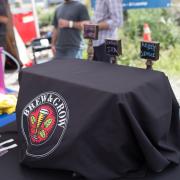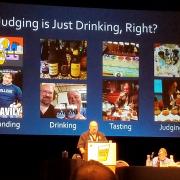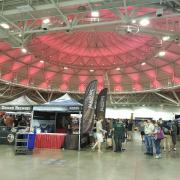As many of you know, I've been brewing with a strain of yeast I "naturally" harvested almost 3 years ago now. I've since moved and am getting ready to hopefully isolate another "winner" at my new house for a true "Kyle's House Strain."
One of the things that is important here is the weather when doing this - it's important to try a capture after a rain, but before it gets too hot (so the Chicago area is tricky with out almost non-existent spring). However, it looks like this week I may get a few opportunities - I'm going to try to get a CHAOS strain as well.
With all that said, I am trying to document this process very thoroughly this year in hopes of submitting an NHC presentation proposal for the 2019 conference and that's where I need your help. Besides the capturing/isolation/growing/brewing - what else would you like to learn? Fishing for ideas here so I can hopefully cover bases I may not be thinking of.
Thanks!












Kyle, this sounds awesome! I'm very interested in your process. This would be an excellent addition to the NHC conference. I've been to many NHC presentations over the past 2 years, and this sounds like the most fascinating I've seen by far.
NORDQUIST 2019
I think I'm most curious about how you isolate the yeast, what it looks like, and how to tell the good (yeast) from the bad (bacteria). But, it sounds like you've got that covered in the "capturing/isolation" section of your presentation.
Let me know if I can help at all.
On the isolation point, are there multiple yeasts present and you are choosing a particular one? If so, what are your criteria for making that choice?
Kyle, this is awesome. Especially the fact that you're going to document it all. It would be cool to create an easy step by step guide to accompany your presentation.
One of the things I'm interested to learn about is whether it's practical to save this yeast and use it for multiple brews over time. If so, would this process differ from normal yeast harvesting? Are wild yeasts more prone to cross contamination as opposed to 'domesticated' yeast? Are there other differences, in general, between the two? How many generations until they also become domesticated?
Kyle, if you need a sample of the Hobo Feces for your project, I'll save a bottle back for you.
Boolish comin in clutch.
Also maybe this is assumed in the isolation portion, but I'm curious about identification. Are you going to be able to find out if a strain is something thats already identified, or an already comercially available stain? What are the chances of that even happening? And also what are the physical actions between petri dish and isolation.